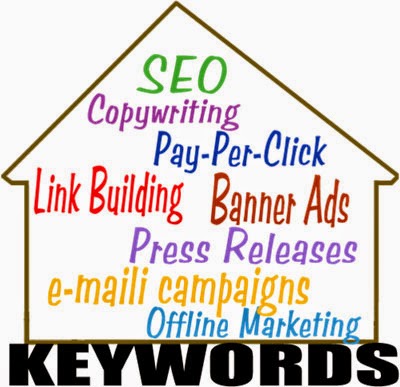The Top UX Predictions for 2016
Adopting UX: The Challenge of Change
More
and more, large companies are bringing UX teams in house and seeing
it as a fundamental element of their business success. UX experts are
being hired, or entire consultancy firms are being acquired as a
whole to shore up larger companies capabilities. This is not
surprising, given the important role UX is playing in the marketplace
and what Forrester is calling "the age of the customer.”
Companies that were not founded with UX "in their DNA" are
adopting it as if it were.
The
impact this is having, and will continue to have, is the realization
that doing UX right means some fundamental changes to your process,
tools, and mindset will have to take place. Just hiring a bunch of
super talented people doesn't get you great experiences out the door.
What we are going to see is - as companies realize this - an emphasis
not just on UX, but on change management, and on how companies
"absorb" and adapt to different versions and approaches of
UX. Not only will more adaptable companies benefit, but approaches to
UX that are more adaptable to core company cultures and values will
flourish while others will fade away.
Designing Anticipatory Experiences & Why Designers Need To Be Business Literate
Content
is a critical factor in creating a great experience. An amazing
experience isn’t just about showing the right information--it’s
about showing the right information at the right time. Today, users
expect some type of personalization: they’re looking for an
experience that is predictive and anticipatory with being creepy. The
key to this is to make use of all the channels we have available to
increase access to helpful information. This includes: better mobile
notifications, more actionable emails, hyper-tailored content and
recommendations, and doing things automatically for users (but always
giving the user control to change).
Another
trend is the overlap of UX and business. It’s not enough for user
experience designers to know tools and processes. To really be
successful, designers must also understand business. Designers must
have the agility and adaptability to quickly read an organization,
understand its business, and operate within its constraints. As
larger and more friction-filled organizations seek to focus on UX, we
as designers must become expert at the dynamics of organizations --
the soft skills -- and operate at the overlap of business and user
experience.
Finally,
in 2016, designers will redefine delight. We’ve heard the request
over and over, “it needs to be delightful.” But what exactly is
delight? Is delight a user need? When we’re interviewing users and
doing research, do they say “I’d like it to be delightful?”
Rarely, if ever. Instead of trying to design delight into our product
experiences, we should create experiences that produce delight as a
byproduct of the experience. One way to do this is making things more
“user friendly,” something people have come to expect. They just
want things to work with ease.
Personalized Experience
In
2016, we will see a turning point from the field of UX as we know it
to the field of PX - delivering Personalized Experience. More and
more businesses are discovering the value of customization, the
opportunity to deliver a customized experience, and the additional
revenue potential that can be generated from it. In fact, it’s
become so strong that today, many popular brands rest their entire
business strategy on their ability to customize their products.
Customization
has become increasingly significant to brand-name companies because
it’s now part of a broader trend that shifts from viewing customers
as recipients of value to co-creators of value. Rather than being
passive, the customer is now becoming a crucial part of the
experience. The same shift that was witnessed in business strategy
will be witnessed in the field of user experience. It will shift from
designing an experience for the user to providing the user the
opportunity to become an integral part of the experience. The key to
success here is adjusting the experience to meet the user's personal
needs and state of mind at any given moment. ClickTale
research
has found that the ability to influence the experience automatically
generates emotional involvement.
Touch First Design
For
the last few years, designers have focused on mobile first design to
address the growing importance of smartphones and tablets in the
digital landscape. The next evolution of our multi-device thinking
should be around "touch first” design, as more laptop and
desktop computers come equipped with touchscreens. Using screen width
and device type to style and size tap targets fails to take into
account the interactive nature of many laptop and desktop computers.
We need to get smarter about device and device capability detection.
As designers, we have to start thinking that all (or almost all)
devices will have touch capabilities.
Mobile enabled experiences
These
days, as mobile devices continue to develop and become more
ubiquitous, we increasingly expect things to "just happen.”
The device becomes, in some ways, an invisible conduit for specific
behaviors. Apple Pay is an example of a mobile-enabled experienced
that triggers an action, in this case payment.
In
2016, we will see more of these experiences develop, with the mobile
device as the enabler. After much talk about the connected home, I
can finally see 2016 as the year we take remote control of our homes
- from Internet of Things products that connect your mobile to home
appliances–such as fridges and heating systems–to enhanced
services where your fridge reminds you that you are running out of
milk!
Up With Touch-Free, Down With Multipurpose
2016
is likely to be an even bigger year for UX than those preceding it.
An increased focus on UX will aid in the creation of simple,
user-friendly apps. The apps dominating the scene in the coming
months will utilize these two key elements:
- Touch-free inputs. In the new year, app designers will continue to make it easier for users to interact with their devices and applications. Instead of relying on touches, the next frontier will concern more voice-based commands, completing the full UX circle. This innovation just started to permeate the industry in 2015, most notably with apps like Square Cash and Google Translate.
- No more feature-heavy apps. 2016 will be the year for single-purpose apps. Like touch-free inputs, this innovation also took off in 2015. Now, app developers are stripping down feature-heavy applications and breaking them into small apps with more focused designs. Facebook has already done this with Messenger, making it easier to maneuver and digest all that the social media platform has to offer. Foursquare also picked up on this advancement with the creation of Swarm.
Customer Journey Analytics
In
2016, the focus will be customer journey analytics, using big data to
aggregate the myriad of behavioral-based journeys into meaningful and
useful maps, rather than self-reported journeys. Companies have been
collecting data for decades but still have no good way to find
opportunities, understand them, and course correct quickly and
easily. This is especially true as data is becoming easier to gather
using tools such as Applause, UserTesting.com, and UserZoom.
Companies are now focused on hiring data scientists to use real data
to tell the story. The trend will continue as senior executives are
all getting on the bandwagon in making customer/user experience a top
priority (as noted by various recent articles from Gartner,
Forrester,
The
Wall Street Journal,
and more).
Empowering Design
In
2016, design will empower people, giving them a sense of control over
their bodies and environments. More importantly, this is the year
that design will fuel all aspects of our social and private lives,
and play a role in how we deal with the everyday as a society and as
individuals. Digital services will continue to help organizations
build stronger relationships with their audiences by providing more
informed and personalized experiences that meet their needs and
exceed expectations.
We
are also seeing the rise of design thinking in influencing how the
government communicates with its public. Gov.org.uk,
for example, are using design thinking to address the general public
with a more human-centric approach, allowing more people to access
information in a meaningful way. Private digital initiatives are also
emerging in the most unpredictable and poetic ways, such as the
Berlin-based Refugees Welcome service, also known as “Airbnb for
refugees," which has invited people from Afghanistan, Burkina
Faso, Mali, Nigeria, Pakistan, Somalia and Syria, into private homes.
This is a shining example of how effective digital can be in enabling
citizens to reach out to one another and connect across geographical
borders and cultural/political boundaries. Design has the potential
to truly make an impact on society by encouraging a people-centric
approach and giving room for a bottom-up communication stream that
gives a voice to the public.




Комментарии